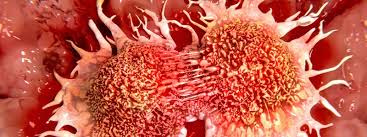1) Are all swellings of bones cancer?
A) We see many swellings arising in the bones.Most of the swellings are non cancerous.
2) How can we know if the swelling is cancer?
A)Cancer can start in any part of any bone. Cancer begins when healthy cells in the bone change and grow out of control, forming a mass called a tumor. A bone tumor can be cancerous or benign.
A cancerous tumor is malignant, meaning it can grow and spread to other parts of the body. A benign tumor means the tumor can grow, but it will not spread to other parts of the body. Even though a benign tumor does not spread outside the bone, it can grow large enough to press on surrounding tissue, weaken the bone, and cause the bone to fracture.
3) Will cancer from bones spread?
A)A malignant tumor can destroy the bone and spread to nearby tissue. If these bone tumor cells get into the bloodstream, they can spread to other parts of the body, especially the lungs, through a process called metastasis.
4)what are the symptoms of bone cancer?
A)When a bone tumor grows, it presses on healthy bone tissue and can destroy it, which causes the following symptoms:
Pain.,Joint swelling and stiffness,Limping.
Rarely, people with a bone sarcoma may have symptoms such as fever, generally feeling unwell, weight loss, and anemia,
5)Are there different types of Bone cancers?
A)There are different types of connective tissue cancers of the bone:
Chondrosarcoma: Chondrosarcoma is cancer of the cartilage. It is more common in adults.
Chordoma: This type of bone sarcoma typically starts in part of the spinal cord.
Ewing sarcoma and osteosarcoma: These are 2 of the most common types of bone sarcoma. They mainly occur in children and young adults.
Fibrosarcoma: This type of soft-tissue sarcoma is also more common among adults, particularly during middle age. It most often begins in the thighbone.
There are other cancers that start in bone marrow, such as myeloma or leukemia. Cancer that started in another area of the body and has spread to the bone is called metastatic cancer, such as breast, lung, or prostate cancers, to spread to the bone.
6)In what age groups is it common?
A)In adults, chondrosarcoma makes up more than 40% of primary bone sarcomas. The average age of diagnosis for this type of bone sarcoma is 50. The next most common type of bone sarcoma in adults is osteosarcoma (28%), followed by chordoma (10%), Ewing sarcoma (8%).
In teens and children, osteosarcoma (56%) and Ewing sarcoma (34%) are diagnosed far more often.
7)Is the survival same for all types of bone cancers?
A)The 5-year survival rate of people with chordoma is 82%. If the cancer is diagnosed at the localized stage, the 5-year survival rate is 87%. If the cancer has spread to surrounding tissues or organs and/or the regional lymph nodes, the 5-year survival rate is 83%. If the cancer has spread to distant parts of the body, the 5-year survival rate is 55%
There are multiple types of chondrosarcoma. Some are slow growing (low grade), while others are faster growing (high grade).
The 5-year survival rate of people with Ewing sarcoma is 62%.
The 5-year survival rate of people with osteosarcoma is 60%.
8)What are the risk factors for bone cancers?
A)Genetics.
Previous radiation therapy. People who have had radiation treatment for other conditions have a higher risk of developing bone sarcoma at the site of the radiation therapy. Bone sarcomas related to radiation therapy appear many years, even decades, after the treatment,
Chemotherapy for another cancer.
Benign tumors or other bone conditions. Paget’s disease of the bone may lead to osteosarcoma.
9)How can we detect bone cancer?
A)Blood tests. Some laboratory blood tests may help find bone sarcoma. People with osteosarcoma or Ewing sarcoma may have higher alkaline phosphatase and lactate dehydrogenase levels in the blood.
An x-ray is a way to create a picture of the structures inside of the body using a small amount of radiation.
Bone scan. A bone scan may be used to help determinate the stage of a bone sarcoma.
Computed tomography (CT or CAT) scan. ,Magnetic resonance imaging (MRI). ,Positron emission tomography (PET) or PET-CT scan.Biopsy is needed to confirm the diagnosis
10)what kind of treatment modalities are offered for Bone cancer?
A)Surgery is main mode of treatment.
Systemic therapy is the use of medication to destroy cancer cells.
The types of systemic therapies used for bone sarcoma may include:
Chemotherapy,Targeted therapy,Immunotherapy,Radiation therapy
11)what kind of follow up care is needed?
A)Watching for recurrence:-One goal of follow-up care is to check for a recurrence, which means that the cancer has come back. Cancer recurs because small areas of cancer cells may remain undetected in the body.
Some patients may require blood tests or imaging tests, such as x-rays or CT scans, done as part of regular follow-up care, but testing recommendations depend on several factors, including the type and stage of cancer first diagnosed and the types of treatment given.

